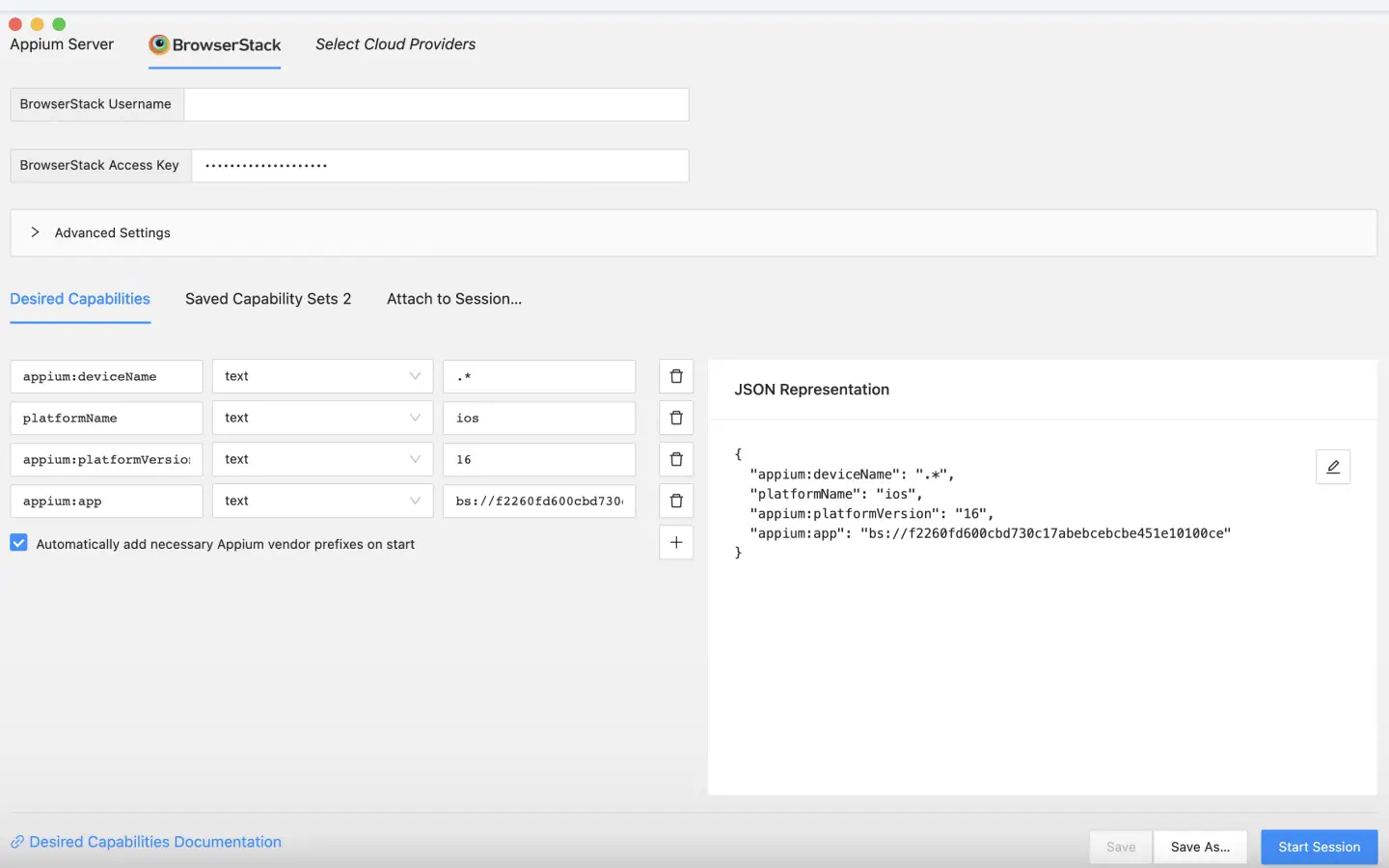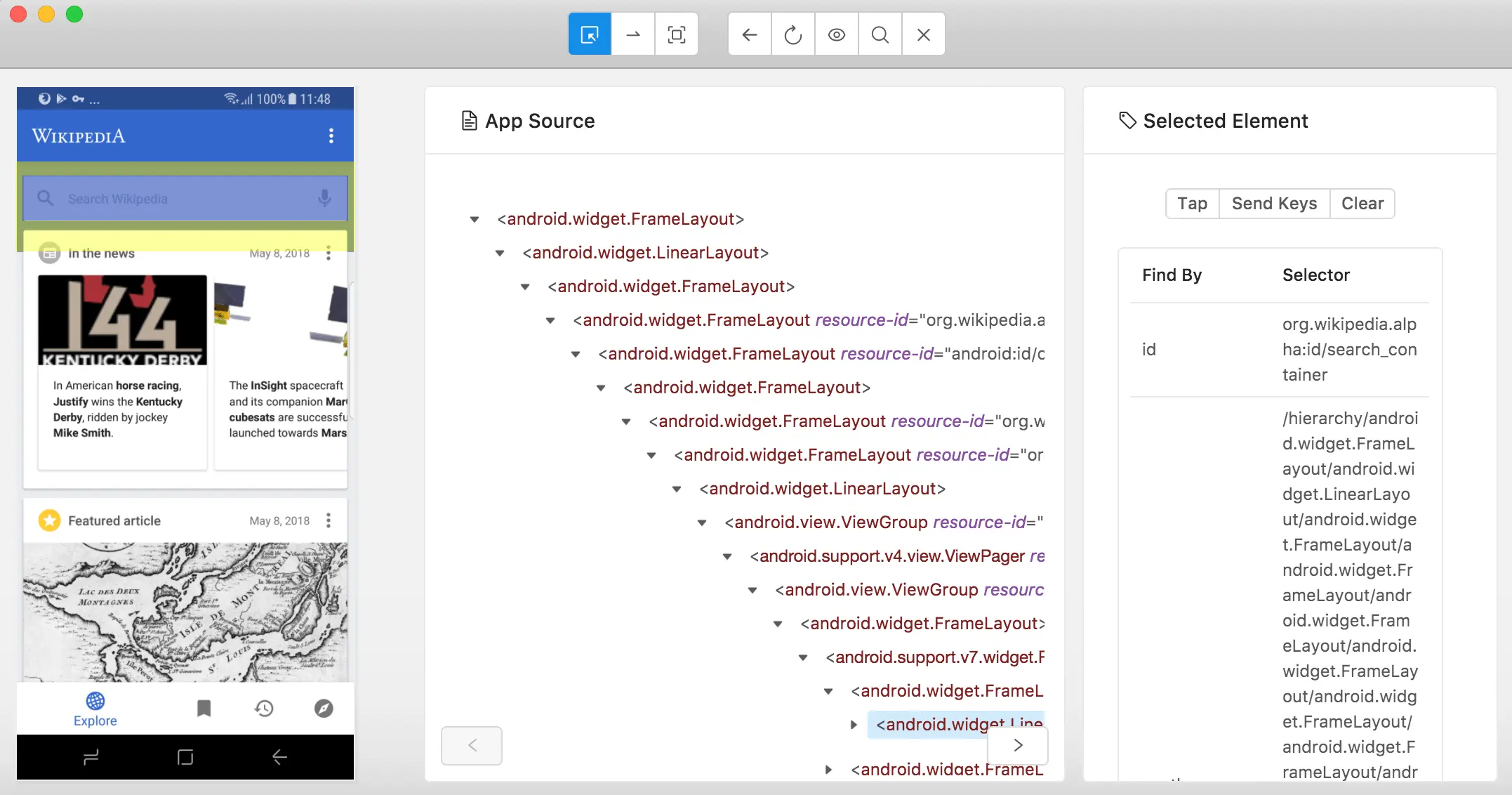Integrate with Appium Inspector
Inspect app elements and interact with them using Appium inspector on BrowserStack’s real devices.
Appium Inspector is a powerful tool that lets you visually inspect, interact, and automate mobile test scripts. With Appium Inspector, you can explore the UI elements of your app in real time, enabling you to create accurate and maintainable test scripts. BrowserStack’s integration with Appium Inspector lets you try the inspector on real Android and iOS devices. Download the latest release of Appium inspector from the Appium Inspector GitHub page.
Integrate BrowserStack with Appium Inspector
To use BrowserStack with Appium inspector, follow these steps:
Upload your Android (.apk file) or iOS (.ipa file) apps to the BrowserStack servers using the REST API. Here is an example cURL request to upload your app using our REST API:
curl -u "YOUR_USERNAME:YOUR_ACCESS_KEY" \
-X POST "https://api-cloud.browserstack.com/app-automate/upload" \
-F "file=@/path/to/app/file/app-debug.apk" \
Here is an example REST API response :
{
"app_url":"bs://f7c874f21852ba57957a3fdc33f47514288c4ba4",
}
We use the app_url value later to set the app capability.
In Appium Inspector, select BrowserStack from the list of cloud providers to start a session window.
On the new session window, enter your BrowserStack username and access key to configure BrowserStack credentials on Appium inspector. You can retrieve these credentials from BrowserStack’s Account Settings page.
Configure BrowserStack capabilities in the Desired Capabilities tab on Appium inspector. Use the app_url value obtained in STEP 1 to set the app capability value. You also need to set the device value. Refer to the Capabilities reference page for a list of supported capabilities.

To locate elements, set the appium:disableSuppressAccessibilityService as false or appium:settings[allowInvisibleElements] as true before initializing the Appium inspector session. For more information, see Identify elements using Appium Inspector
After successfully connecting to the BrowserStack device, you can view the elements of your app and record the session. Use the App Automate Dashboard to access test details.

We're sorry to hear that. Please share your feedback so we can do better
Contact our Support team for immediate help while we work on improving our docs.
We're continuously improving our docs. We'd love to know what you liked
We're sorry to hear that. Please share your feedback so we can do better
Contact our Support team for immediate help while we work on improving our docs.
We're continuously improving our docs. We'd love to know what you liked
Thank you for your valuable feedback!